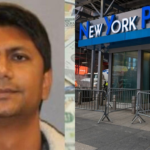
by SALMAN J. CHOUDHURY
The killing of Hassan Nasrallah, Hezbollah’s leader, has reverberated through Lebanon and the Middle East. Nasrallah, who led Hezbollah since 1992 following the death of its founder, Abbas al-Musawi, was a key figure in the region’s political and military landscape. Initially formed in the 1980s during the Lebanese Civil War and the Israeli invasion, Hezbollah was born as a resistance group against Israeli occupation. Over time, it developed into a major political and military force, operating with considerable independence from the Lebanese government. Under Nasrallah’s leadership, Hezbollah became a staunch defender of Lebanon’s sovereignty, drawing significant support from Shiite communities while also provoking fear and opposition, especially from Sunni and Christian factions. Nasrallah’s assassination has unleashed significant turmoil, with heightened concerns about rising violence in a region already on edge. In the immediate aftermath, the region has seen increased airstrikes and bombings in civilian areas, leading to numerous casualties, including many non-combatants. While some justify these actions on military grounds, the loss of civilian life raises difficult ethical dilemmas. Is the destruction of civilian areas ever defensible in the context of military objectives? Critics argue that such violence only perpetuates a cycle of fear and revenge, making peace more difficult to attain. The conflict between Israel and Lebanon, particularly Hezbollah, adds another layer of complexity to the situation. Israel considers Hezbollah a serious threat and frequently responds to perceived provocations with military force. The assassination of Nasrallah might embolden Israeli authorities to esc alate their military activities, seeing an opportunity to weaken Hezbollah’s influence. However, this could trigger a strong backlash from Hezbollah’s supporters, potentially plunging Lebanon into deeper instability. The consequences of Nasrallah’s death extend beyond Lebanon’s borders. Neighboring countries, already enmeshed in a web of alliances and rivalries, are watching events closely. The power vacuum created by his assassination could lead to shifts in regional alignments, with countries like Syria, Iran, and Saudi Arabia possibly intervening to protect their interests. This interconnectedness highlights the precarious nature of peace in the Middle East—instability in one area could quickly ripple outwards, igniting tensions in places like Syria, Iraq, or the Gulf states. Speculation about foreign involvement, particularly by the U.S., also surrounds Nasrallah’s killing. The U.S. has long been involved in Middle Eastern geopolitics, often under the guise of promoting stability and democracy. Some believe Washington could have been involved, seeing Hezbollah as a proxy for Iranian influence. While there is no hard proof, such suspicions feed conspiracy theories, further complicating the already volatile political environment. In conclusion, Nasrallah’s assassination marks a crucial moment for Lebanon and the wider Middle East. It raises serious questions about Hezbollah’s future, the nature of the ongoing conflict with Israel, and the broader potential for regional unrest. As Lebanon deals with the aftermath, the actions of various political and military factions will determine not only the future of the country but also the larger geopolitical landscape of the region. The balance of power in the Middle East is more fragile than ever, with both conflict and significant change on the horizon.
Author: Editor, The Generation







